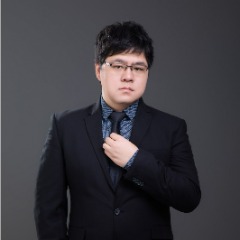
长聘教轨副教授



基于蛋白质功能设计,在微纳结构中整合具有分子特异性的生物电化学界面,实现低维状态下生-电信号的实时交互。
利用蛋白质设计手段,通过解析在生理和病理过程中具有重要作用的膜蛋白的分子机制,或是设计类抗体诱饵受体蛋白,拓宽其在生物医药中的应用。
利用包括扩散模型在内的深度学习方法,基于序列和结构等多方面信息进行基于结构的从头蛋白设计或针对已有蛋白质数据集的性质优化。
利用包括QTY编码在内的理性设计手段,对于膜蛋白的溶解度和功能特性进行设计优化。
S. Zhang|, Z. Jiang|, R. Huang, S. Mo, L. Zhu, P. Li, Z. Zhang, E. Pan, X. Chen, Y. Long, Q. Liang, J. Tang, R. Xu*, R. Qing*. “PRO-LDM: a conditional latent diffusion model for protein sequence design and functional optimization”, Advanced Sciences, (2025) e02723.
C. Sun, S. Hao*, L. Wang, R. Meng, H. Wang, W. Li, J. Deng, Q. Yin, X. Chen, T. Xiang, Z. Liu, H. Zheng, Z. Luo, K. Cai, B. Wang*, S. Zhang*, R. Qing*. “Inhibiting cancer metastasis by water-solubilized membrane receptor CXCR4QTY-Fc as molecular traps”, Cell Chemical Biology, (2025).
R. Meng, S. Hao*, C. Sun, Z. Hou, Y. Hou, L. Wang, P. Deng, P. Deng, J. Deng, Y. Yang, H. Xia, B. Wang*, R. Qing*, S. Zhang*. “Reverse-QTY code design of active human serum albumin self-assembled amphiphilic nanoparticles for effective anti-tumor drug doxorubicin release in mice”, Proceedings of the National Academy of Sciences, 120, 21, (2023) e2220173120.
R. Qing|*, M. Xue|, J. Zhao, L. Wu, A. Breitwieser, E. Smorodina, T. Schubert, G. Azzellino, D. Jin, J. Kong, T. Palacios*, U. Sleytr, S. Zhang*. “Scalable biomimetic sensing system with membrane receptor dual-monolayer probe and graphene transistor arrays”, Science Advances, 9, 29, (2023) eadf1402.
R. Qing*, Q. Han, M. Skuhersky, M. Badr, H. Chung, T. Schubert, S. Zhang*. “QTY code designed thermostable and water-soluble chimeric chemokine receptors with tunable ligand affinity”, Proceedings of the National Academy of Sciences, 116-51, (2019) 25668-25676.
R. Qing|*, F. Tao|, P. Chatterjee|, G. Yang, Q. Han, H. Chung, J. Ni, B. Suter, J. Kubicek, B. Maertens, T. Schubert, C. Blackburn, S. Zhang*. “Non-full-length water-soluble CXCR4QTY and CCR5QTY chemokine receptors: implication for overlooked truncated but functional membrane receptors”, 23-12, iScience, (2020) 101670.
M. Li, H. Tang, R. Qing, Y. Wang, P. Xu*, S. Zhang*, F. Tao*. “Design of a water-soluble transmembrane receptor kinase with intact molecular function by QTY code”, Nature Communications, 15, 1, (2024) 4293.
P. Chatterjee*, N. Jakimo, J. Lee, N. Amrani, T. Rodriguez, S. Koseki, R. Qing, S. Hao, E. J. Sontheimer, J. M. Jacobson*. “An engineered ScCas9 with broad PAM range and high specificity and activity”, Nature Biotechnology, 38-10, (2020) 1212.
S. Zhang*, F. Tao, R. Qing, H. Tang, M. Skuhersky, K. Corin, L. Tegler, A. Wassie, B. Wassie, Y. Kwon, B. Suter, C. Entzian, T. Schubert, G. Yang, J. Labahn, J. Kubicek, B. Maertens. “QTY code enables design of detergent-free chemokine receptors that retain ligand-binding activities”, Proceedings of the National Academy of Sciences, 115-37, (2018) E8652-E8659.